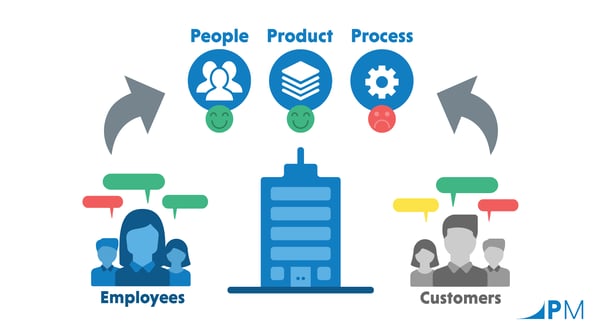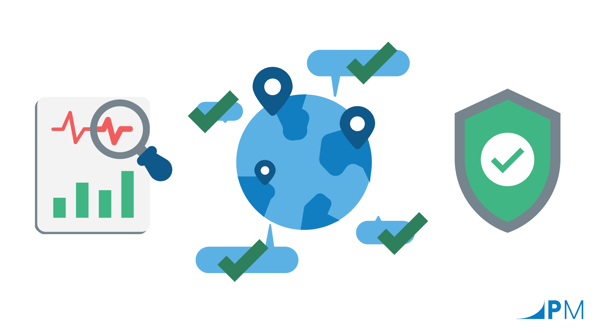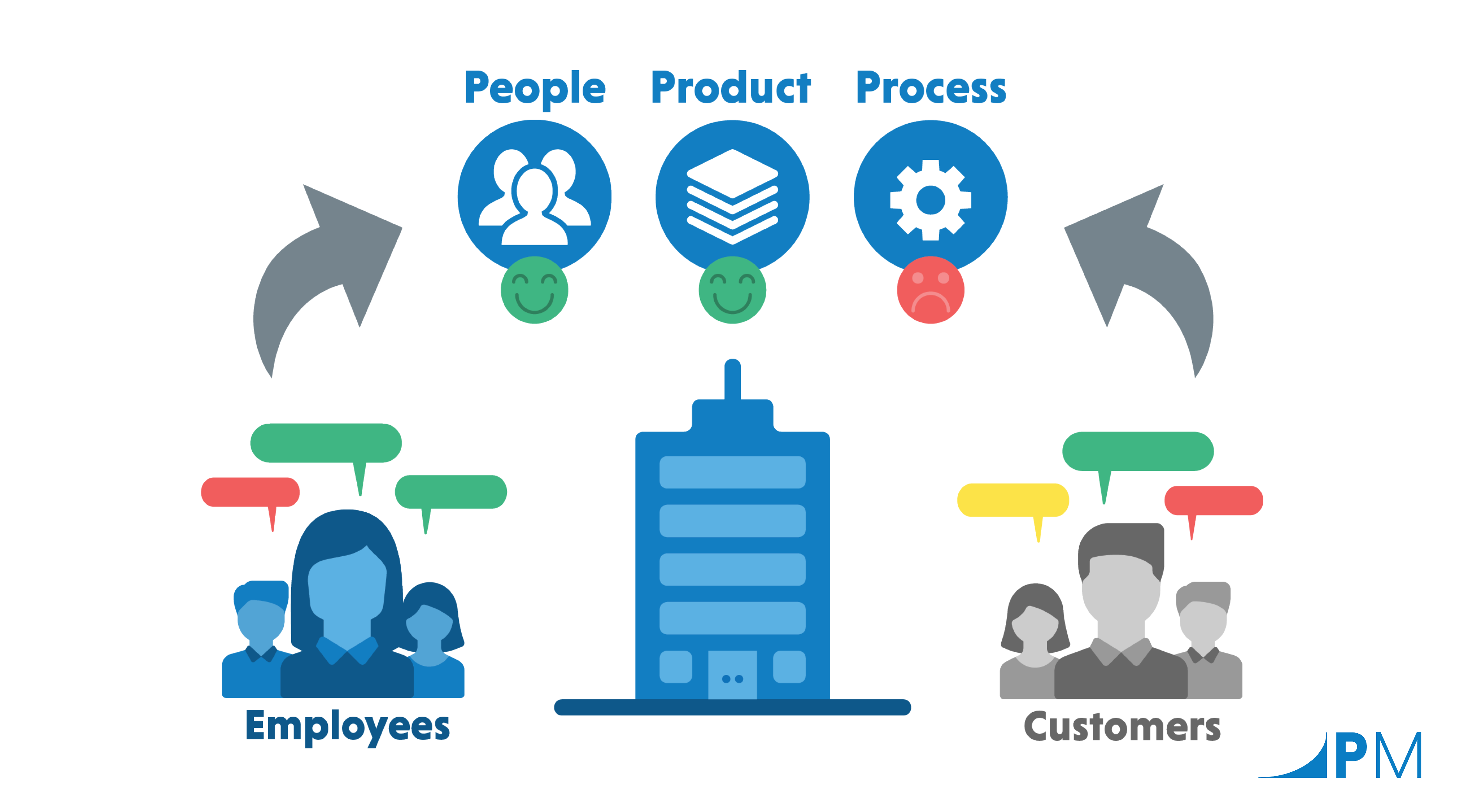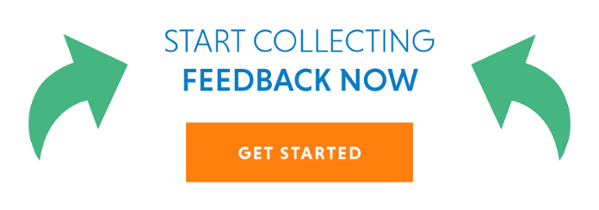Imagine this: you’re on a road trip and everything is going great – the windows are down, you’ve got great music playing, and only a few more hours to go before you reach your destination. Suddenly the car comes to a sputtering halt – “oh $#*!” – you’ve run out of gas. A million thoughts start running through your head - “Why didn’t I check the tank before I left? Is there a gas station near here? Do I have cell service to call for help?” And worst of all, “How could I have let this totally avoidable problem happen?”
The same way you should check your fuel level before embarking on a long road trip, private equity firms need to ensure that an acquisition company’s customer base is still going to be there when the deal is done, and that the internal structure of the company is properly configured to support customer-centric goals.
If customers are the fuel, employees are the engine, and together they drive the forward trajectory of any company. Collecting customer & employee feedback as part of the due diligence process allows astute investors to not only gain an intimate understanding of the needs and unique characteristics of an acquisition company’s target customer population and employee base, but also helps you avoid that “Oh $#*!” moment that could leave you stranded and helpless on the side of the road.

By analyzing the dynamics of an acquisition company’s relationship with its customers and employees, business leaders become armed with the actionable insight necessary to make an informed investment decision and reduce risk.
The benefits of collecting customer feedback
In addition to showing customers that your organization cares about them and is working to actively improve its service offering, there are several other distinct benefits of collecting customer feedback as part of the acquisition due diligence process:
Develop an intimate understanding of your customer base
What moves your target customer population towards a purchasing decision? Identify the factors that ultimately lead a customer to take action and capitalize on them. Collecting customer feedback provides the fodder for more effective marketing activities and elucidates operational imperfections that influence churn.
Identify opportunities for line extension and growth
The old adage that 80% of a product’s value is derived from only 20% of its features reigns true. Take the guesswork out of growing an acquisition company’s service offering by asking its customers which features and services they value most.
Understand the competitive landscape
Intelligent survey design can also confirm who the largest players in the industry are, and what might drive your target customers into the outstretched arms of competitors.
Solidify your market position
Self-awareness is critical. By understanding the strengths and weaknesses of an acquisition company in the eyes of its most important asset, leadership teams can emphasize the aspects of a product or service that are performing well and actively improve areas of weakness before they impact market share.
Gather baseline metrics and determine KPIs
It’s difficult to understand the revenue potential of a target acquisition company without comprehensively understanding where it stands in the eyes of its customers. By collecting baseline measurements of a company’s Net Promoter Score (NPS) (the degree to which a customer would promote the company to friends and family); Customer Effort Score (CES) (the degree of difficulty it takes to do business with a company); or other key performance metrics, investors can take strategic action and track improvement over time.
The benefits of collecting employee feedback
If customers are a company’s most important asset, its workforce is an extremely close second. The “outside-in” perspective provided by customer feedback is critical for reliable future revenue predictions, but the employee experience absolutely should not be ignored. There is a strong correlation between employee experience and customer experience. Customer feedback paints that picture of future success, but employee feedback provides the paint. Similar to leveraging the voice of the customer in the due diligence process, there are many benefits to collecting employee feedback as well:
Understand the culture of the organization
Happy employees = happy customers. Through employee feedback, systemic cultural issues within an organization can be brought to light and resolved. Employees who are unsatisfied with their work environment are ill-equipped to provide an exceptional customer experience.
Identify operational inefficiencies
Organizational silos and miles of red tape inhibit employees from having effective interactions with customers. By mapping the journey from problem to resolution, an investment company can empower employees to put the customer at the core of every decision-making process.
Garner alignment toward the corporate mission
Customers want to do business with companies that align with their values and make them feel good about their purchase decision. Measuring the degree of alignment among employees around a common customer-centric mission and shared corporate values will encourage employees to promote their employer and take pride in their work. This has a profound impact on potential customer’s perception of an acquisition company and can significantly reduce the urge to test the market after a purchase decision is made.
Encourage transparency
Like customers, employees like to know that their voice is being heard. Collecting employee feedback prior to investment provides employees who are “in the trenches” interacting with customers the confirmation that they play an active role in the growth of the organization.
Invest in your own success
By investing in a customer and employee feedback program as an essential part of the due diligence process, investors reduce the risk involved with every investment transaction. This inside-outside approach provides a 360-degree view of an acquisition company and provides the benchmark data necessary for success after the acquisition is complete - and the benefits can be empirically measured in dollars.

Bolstering the due diligence process doesn’t need to be a $50,000 qualitative research program for every target company. Look for a partner with intimate knowledge of the space, the thought leadership to guide implementation and scale your program across verticals, and the software and technology to customize the data output to your specific needs.
Matt Salvetti is a Market Development Specialist at PeopleMetrics. With a background in marketing and market research, he is passionate about helping organizations incorporate the voice of the customer and patient into strategic business decisions. Outside of work, Matt is a bit too passionate about the Philadelphia Eagles, Flyers, Sixers and Phillies. When not busy yelling at professional athletes on his TV screen, Matt is an expert at finding his way into (and sometimes out of) sand traps at his local golf course.
P.S. What did you think of this blog post?
 |
 |
 |







%20(1).png)